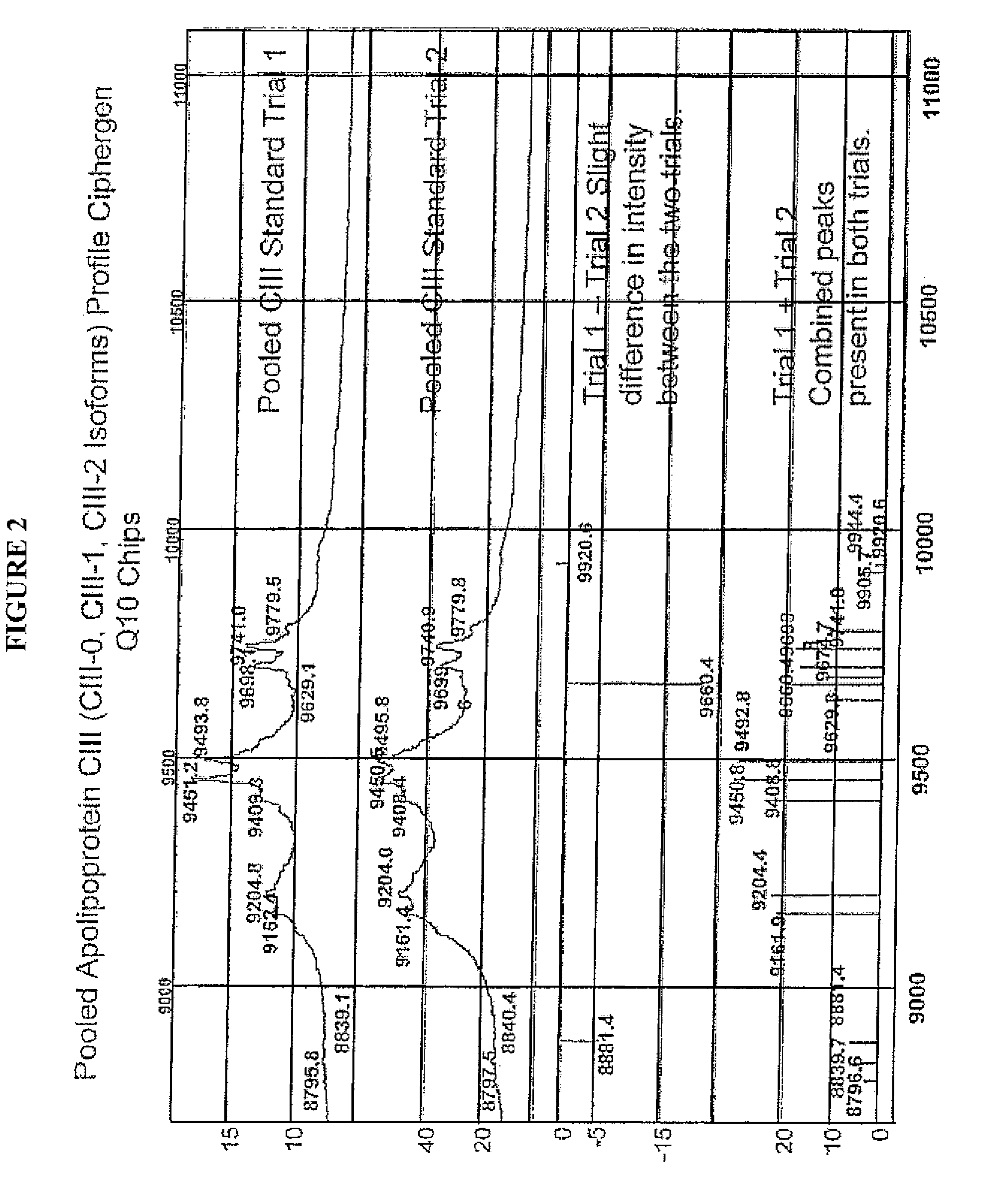Apolipoprotein fingerprinting technique and methods related thereto
a fingerprinting and apolipoprotein technology, applied in the field of apolipoprotein composition, analysis and quantification, can solve the problems of inaccurate existing techniques, current methods, and inability to accurately isolate ciii, and achieve the effect of facilitating enhanced results and facilitating detection and measuremen
- Summary
- Abstract
- Description
- Claims
- Application Information
AI Technical Summary
Benefits of technology
Problems solved by technology
Method used
Image
Examples
Embodiment Construction
[0037]In describing the preferred and alternate embodiments of the present invention, and with reference to FIGS. 1A-12, specific terminology is employed for the sake of clarity. The invention, however, is not intended to be limited to the specific terminology so selected, and it is to be understood that each specific element includes all technical equivalents that operate in a similar manner to accomplish similar functions.
[0038]This invention provides sensitive and rapid methods that can be useful in identifying and assessing cardiovascular diseases (e.g. lipid disorders, metabolic syndrome, and atherosclerosis), Alzheimer's disease, cancer, prostate cancer, stress, stroke, diabetes, inflammation, Parkinson's disease and other neurological disorders, and / or any condition or disorder that may be diagnosed and / or characterized using a profile comprising apolipoproteins. As an apolipoprotein profile, and relative isoform characterization, correlates with a status of a disease, so the...
PUM
| Property | Measurement | Unit |
|---|---|---|
| time | aaaaa | aaaaa |
| mass spectrometry | aaaaa | aaaaa |
| concentration | aaaaa | aaaaa |
Abstract
Description
Claims
Application Information
 Login to View More
Login to View More - R&D
- Intellectual Property
- Life Sciences
- Materials
- Tech Scout
- Unparalleled Data Quality
- Higher Quality Content
- 60% Fewer Hallucinations
Browse by: Latest US Patents, China's latest patents, Technical Efficacy Thesaurus, Application Domain, Technology Topic, Popular Technical Reports.
© 2025 PatSnap. All rights reserved.Legal|Privacy policy|Modern Slavery Act Transparency Statement|Sitemap|About US| Contact US: help@patsnap.com



